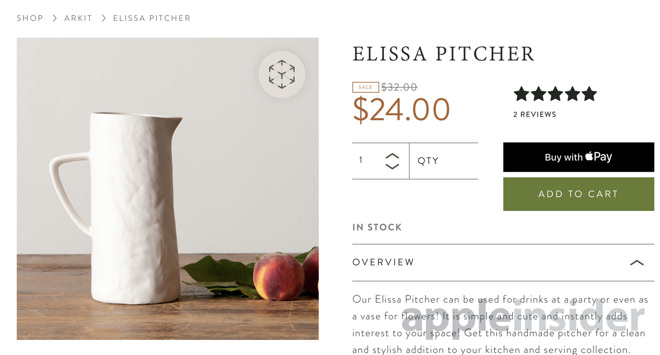AR Quick Look brings augmented reality to Safari in iOS 12
Online shopping will get a lot more interactive this fall when iOS 12 launches, thanks to the new feature AR Quick Look. Instead of relying on user-installed apps, AR Quick Look makes it easy to view AR capable images right from within Safari.

SRC: Daniel Beauchamp
Daniel Beauchamp, head of augmented and virtual reality at Shopify, outlined ways Shopify will be implementing these changes this fall in a Medium post.
Web developers creating any type of website will now be able to add images their site and link it to a usdz file. A format Apple created in partnership with Pixar alongside ARKit 2.0.

Whenever an embedded image is linked to a usdz file, an icon will appear in the top right corner of the image, letting users know it will be able to be viewable in AR. This could apply to any object, though shopping sites are going to be one of the most prominent targets of this feature.
Since iOS 12 support usdz files in a variety of ways, users are actually able to easily share these images as well. If they find a particular object online that the like, they can copy and share the usdz AR image in a message or email to another iOS user to view in their own living room.
Shopify is adding support for these image types this fall, as will many other online retailers.
If you are currently running the iOS 12 beta, you can test this feature out for yourself by visiting an already AR-equipped Shopify store and viewing any of the products.

SRC: Daniel Beauchamp
Daniel Beauchamp, head of augmented and virtual reality at Shopify, outlined ways Shopify will be implementing these changes this fall in a Medium post.
ARKit debuted as part of iOS 11, allowing developers to easily add AR experiences into their apps. We saw countless shopping applications jump on board, but still required would-be shoppers to download the apps first. Now with iOS 12, AR can be experienced from the browser, no additional apps necessary.Browse for products, preview them in AR, and then buy with Apple Pay. All within Safari on iOS 12. It's a delightful experience that Shopify merchants will be able to offer this fall. #arkit #ios12 #shopify pic.twitter.com/KLOKkBKAjp
-- Daniel Beauchamp (@pushmatrix)
Web developers creating any type of website will now be able to add images their site and link it to a usdz file. A format Apple created in partnership with Pixar alongside ARKit 2.0.

Whenever an embedded image is linked to a usdz file, an icon will appear in the top right corner of the image, letting users know it will be able to be viewable in AR. This could apply to any object, though shopping sites are going to be one of the most prominent targets of this feature.
Since iOS 12 support usdz files in a variety of ways, users are actually able to easily share these images as well. If they find a particular object online that the like, they can copy and share the usdz AR image in a message or email to another iOS user to view in their own living room.
Shopify is adding support for these image types this fall, as will many other online retailers.
If you are currently running the iOS 12 beta, you can test this feature out for yourself by visiting an already AR-equipped Shopify store and viewing any of the products.

Comments
If SolidWorks and/or Rhino do not yet support export in usdz file format, Adobe Photoshop CC latest version may have this capability. If it does, you can export to one of several formats Photoshop can import and then export from Photoshop.
I’m not sure of the fidelity of surface mapping and other aspects of your files will come through intact, especially the physics attributes of SolidWorks. I’ll investigate this later as I am retired from work in several “3D CAD” programs and longtime Photoshop professional. I ignored trying Photoshop 3D features as 3DStudio MAX and Maya met those needs (for me, both sadly gobbled up by AutoCAD some time ago).
You can count on Adobe to come up with specialty application(s) and extensions to existing programs to get out in front on AR creation tools as a member of the group that created the usdz file format.
If if any of you readers find out what applications adopt or have adopted this file type, please post for our benefit.
FYI: this usdz file format is an enhanced version of pre-existing “usd” file format used by Pixar (Universal Scene Description = usd) fundamental to Pixar’s 3D animation process. The three companies added additional features and compatibility as well as preview-able zip compression (“z” part of file extension).
Note to AppleInsider: this is worthy of continued coverage to keep us up-to-date on announcements of any software plans and actual availability of creation tools to create and export usdz files to integrate into content.
Public beta 2
Update.... Had Purify filtering, had to whitelist the site. Working now.